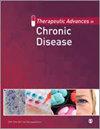缺乏认识和种族极性是伦敦南部高危糖尿病人群患代谢相关性脂肪肝的主要原因
IF 3.3
3区 医学
Q2 PHARMACOLOGY & PHARMACY
引用次数: 0
摘要
背景:代谢相关性脂肪肝(MAFLD)是全球慢性肝病的主要病因。值得注意的是,具有代谢风险因素(如糖尿病和肥胖)的人患代谢相关性脂肪肝的比例惊人,估计高达 70%。目的:本研究的主要目的是评估定期接受二级护理的糖尿病患者对MAFLD的认识和患病率,尤其关注多种族背景和相关的生活方式偏好如何影响这些健康结果。同意参加筛查的患者将由肝病专家提供有关饮食、体育锻炼和MAFLD知识的结构化问卷。每位参与者的人体测量数据、病史、肝脏硬度测量值和受控衰减参数(CAP)均被记录在案。结果:在这个多种族高危人群中,96.4%(215 人)的 FibroScan 数据有效,53.5%(115/215 人)患有脂肪肝,26.2%(58/215 人)患有肝纤维化。对 MAFLD 的认识明显不足,仅为 30.9%。令人震惊的是,69% 的肝纤维化患者对这一病症并不熟悉。此外,不同种族群体对 MAFLD 的了解程度也不尽相同,其中白种人/白人的了解程度最高(46%)。由于代谢状况和合并症,这些受试者中的大多数(96%)正在接受医疗保健专业人员提供的特定生活方式建议。然而,大多数患者喜欢富含碳水化合物的饮食(65.8%),只有 43% 的受试者每天进行适量运动,这突出表明他们对 MAFLD 和生活方式管理缺乏了解。此外,制定具有成本效益的风险分层策略对于解决这一日益严重的健康问题至关重要。本文章由计算机程序翻译,如有差异,请以英文原文为准。
Lack of awareness and ethnic polarity is a major cause of metabolic associated fatty liver disease in high-risk diabetes population in South London
Background:Metabolic associated fatty liver disease (MAFLD) stands as the leading cause of chronic liver disease globally. Notably, individuals with metabolic risk factors, such as diabetes and obesity, exhibit a staggering prevalence of MAFLD, with estimates reaching up to 70%. However, despite its widespread occurrence, there’s a noticeable gap in understanding and awareness about MAFLD among these high-risk groups.Objectives:The main objective of this study was to assess the awareness and prevalence of MAFLD among diabetic patients who regularly receive secondary care focusing particularly on how multiethnic backgrounds and associated lifestyle preferences influence these health outcomes.Design:Cross-sectional study.Methods:Patients with type 2 diabetes (T2D) who regularly attend Lambeth Diabetes Intermediate Care Team clinics were invited to undergo MAFLD screening using FibroScan. Those who agreed to participate were provided with structured questionnaires on diet, physical activity, and MAFLD knowledge by a hepatologist. For each participant, anthropometric data, medical history, liver stiffness measurement, and controlled attenuation parameter (CAP) were documented. Steatosis was identified with a CAP value of ⩾275 dB/m, and advanced fibrosis was flagged at values of ⩾8 kPa.Results:The FibroScan data was valid in 96.4% (215), 53.5% (115/215) had steatosis and 26.2% (58/215) had liver fibrosis in this multiethnic high-risk group. Awareness of MAFLD was notably low at 30.9%. Alarmingly, 69% of patients diagnosed with liver fibrosis were unfamiliar with the condition. Additionally, understanding of MAFLD showed variation among different ethnic groups with highest levels were demonstrated in the Caucasian/White population (46%). Majority (96%) of these subjects were receiving specific lifestyle advice from healthcare professionals due to metabolic conditions and comorbidities. However, most patients preferred diets that were rich in carbohydrates (65.8%) and only 43% subjects performed moderate exercise daily highlighting lack of understanding regarding MAFLD and lifestyle management.Conclusion:There’s a pressing need for increased awareness of MAFLD, especially in multiethnic high-risk groups. Additionally, the development of cost-effective strategies to stratify risk is essential to address this growing health concern.
求助全文
通过发布文献求助,成功后即可免费获取论文全文。
去求助
来源期刊

Therapeutic Advances in Chronic Disease
Medicine-Medicine (miscellaneous)
CiteScore
6.20
自引率
0.00%
发文量
108
审稿时长
12 weeks
期刊介绍:
Therapeutic Advances in Chronic Disease publishes the highest quality peer-reviewed research, reviews and scholarly comment in the drug treatment of all chronic diseases. The journal has a strong clinical and pharmacological focus and is aimed at clinicians and researchers involved in the medical treatment of chronic disease, providing a forum in print and online for publishing the highest quality articles in this area.
 求助内容:
求助内容: 应助结果提醒方式:
应助结果提醒方式:


